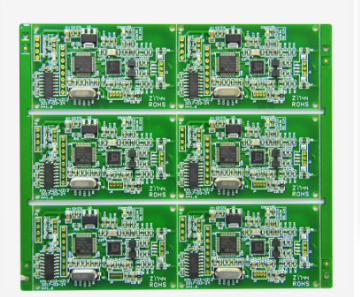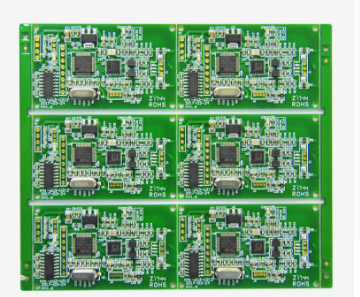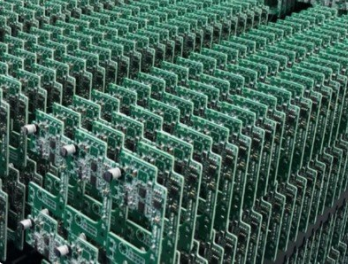
Due to the SMAll size and size, there is almost no ready-made printed circuit board standard for the growing wearable Internet of Things MARKet. Before these standards CAMe out, we had to rely on the knowLEDge and manufacturing experience learned in board level development and think about how to apply them to unique emerging challenges. There are three areas that need our special attention: circuit board surface materials, RF/mICrowave design and RF transmission lines.

PCB materials
PCB is generally composed of laminations, which may be made of fiber reinforced epoxy resin (FR4), polyimide or Rogers materials or other laminated materials. The insulating materials between different layers are called sEMI curing sheets.
Wearable devices require high reliability, so when PCB designers face the choice of using FR4 (PCB manufacturing material with the highest cost performance ratio) or more advanced and expensive materials, this will become a problem.
If wearable PCB applications require high-speed and high-frequency materials, FR4 may not be the best choice. The dielectric constant (Dk) of FR4 is 4.5, that of the more advanced Rogers 4003 series materials is 3.55, and that of the brother Rogers 4350 series is 3.66.
The dielectric constant of a stack refers to the ratio of the capacitance or energy between a pair of conductors near the stack and the capacitance or energy between the pair of conductors in vacuum. In high frequency, it is better to have very small loss. Therefore, Roger 4350 with a dielectric coefficient of 3.66 is more suitable for higher frequency applications than FR4 with a dielectric constant of 4.5.
Normally, the number of PCB layers for wearable devices ranges from 4 to 8. The principle of layer construction is that if it is an 8-layer PCB, it should be able to provide enough layers and power supply layers and clamp the wiring layer in the middle. In this way, ripple effect in crosstalk can be kept to a minimum and electromagnetic interference (EMI) can be significantly reduced.
In the circuit board layout design phase, the layout scheme is generally to place large blocks of layers close to the power distribution layer. This can form a very low ripple effect, and the system noise can be reduced to almost zero. This is particularly important for the RF subsystem.
Compared with Rogers materials, FR4 has a higher dissipation factor (Df), especially at high frequencies. For the FR4 stack with higher performance, the Df value is about 0.002, which is an order of magnitude better than the common FR4 stack. However, Rogers has a stack of 0.001 or less. When FR4 materials are used in high-frequency applications, there will be a significant difference in insertion loss. Insertion loss is defined as the power loss of signal transmitted from point A to point B when FR4, Rogers or other materials are used.
Manufacturing problems
Wearable PCB requires stricter impedance control, which is an important factor for wearable devices. Impedance matching can produce cleaner signal transmission. Earlier, the standard tolerance for signal carrying routing was ± 10%. This indicator is obviously not good enough for today's high-frequency high-speed circuits. The current requirement is ± 7%, or even ± 5% or less in some cases. This parameter and other variables will seriously affect the manufacturing of wearable PCBs with particularly strict impedance control, thereby limiting the number of businesses that can manufacture them.
The dielectric constant tolerance of the layers made of Rogers ultra-high frequency materials is generally kept at ± 2%, and some products can even reach ± 1%. In contrast, the dielectric constant tolerance of FR4 layers is as high as 10%. Therefore, comparing the two materials, it can be found that Rogers' insertion loss is particularly low. Compared with the traditional FR4 material, the transmission loss and insertion loss of Rogers stack are half lower.
In most cases, cost is the most important. However, Rogers can provide relatively low loss high-frequency stack performance at an acceptable price. For commercial applications, Rogers and FR4 based on epoxy resin can be made into a mixed PCB, some of which are made of Rogers material, and others are made of FR4.
Frequency is the primary consideration when selecting Rogers stacks. When the frequency exceeds 500MHz, PCB designers tend to choose Rogers materials, especially for RF/microwave circuits, because these materials can provide higher performance when the routing above is strictly controlled by impedance.
Compared with FR4 material, Rogers material can also provide lower dielectric loss, and its dielectric constant is stable in a wide frequency range. In addition, Rogers materials can provide the ideal low insertion loss performance required by high-frequency operation.
The coefficient of thermal expansion (CTE) of Rogers 4000 series materials has excellent dimensional stability. This means that compared with FR4, when PCB undergoes cold, hot and very hot reflow cycles, the thermal expansion and cold contraction of PCB can be kept at a stable limit under higher frequency and higher temperature cycles.
In the case of mixed laminations, Rogers and high-performance FR4 can be easily mixed together using generic manufacturing technology, so it is relatively easy to achieve high manufacturing yield. Rogers lamination does not require a special through hole preparation process.
Ordinary FR4 cannot achieve very reliable electrical performance, but high-performance FR4 materials do have good reliability characteristics, such as higher Tg, still relatively low cost, and can be used for a wide range of applications, from SIMple audio design to complex microwave applications.
RF/Microwave Design Considerations
Portable technology and Bluetooth have paved the way for RF/microwave applications in wearables. Today's frequency range is becoming more and more dynamic. A few years ago, VHF was defined as 2GHz~3GHz. But now we can see ultra-high frequency (UHF) applications in the range of 10GHz to 25GHz.
Therefore, for wearable PCB, the RF part needs to pay more attention to the wiring problems, separate the signals separately, and keep the wiring that generates high-frequency signals away from the ground. Other considerations include: provision of bypass filter, sufficient decoupling capacitor, grounding, and nearly equal design of transmission line and return line.
The bypass filter can suppress the ripple effect of noise content and crosstalk. The decoupling capacitor needs to be placed closer to the device pin carrying the power signal.
High speed transmission lines and signal circuits require a layer to be arranged between signals in the power layer to smooth the jitter generated by noise signals. At high signal speeds, small impedance mismatches can cause unbalanced transmission and reception signals, resulting in distortion. Therefore, we must pay special attention to the impedance matching problem related to RF signals, because RF signals have high speed and special tolerance.
RF transmission lines require impedance control to transmit RF signals from a specific IC substrate to a PCB. These transmission lines can be implemented in the outer layer, top layer and bottom layer, or designed in the middle layer.
The methods used in PCB RF layout design include microstrip line, suspended stripline, coplanar waveguide or grounding. The microstrip line consists of a fixed length of metal or wire and a whole or part of the ground plane directly below. The characteristic impedance in general microstrip line structures ranges from 50 Ω to 75 Ω.
Suspended striplines are another way to route and suppress noise. This line is composed of fixed width wiring on the inner layer and large ground plane above and below the central conductor. The ground plane is sandwiched in the middle of the power layer, so it can provide a very effective grounding effect. This is a preferred method for RF signal wiring of wearable PCB.
Coplanar waveguides can provide better isolation near RF lines and lines that need to be routed close. This medium consists of a central conductor and the ground plane on either side or below. The best way to transmit RF signals is to levitate striplines or coplanar waveguides. These two methods can provide better isolation between signal and RF cabling.
The so-called "via fence" is recommended on both sides of the coplanar waveguide. This method can provide a row of grounding vias on each metal ground plane of the central conductor. The main route running in the middle has a fence on each side, so it provides a shortcut for the return current to the lower stratum. This method can reduce the noise level related to the high ripple effect of the RF signal. The dielectric constant of 4.5 remains the same as the FR4 material of the prepreg, while the dielectric constant of the prepreg from the microstrip line, stripline or offset stripline is about 3.8 to 3.9.
In some equipment using ground plane, blind hole may be used to improve decoupling performance of power supply capacitor and provide shunt path from device to ground. The shunt path to the ground can shorten the length of vias, which can achieve two purposes: you can not only create shunt or ground, but also reduce the transmission distance of devices with small plots, which is an important factor in RF PCB design.









